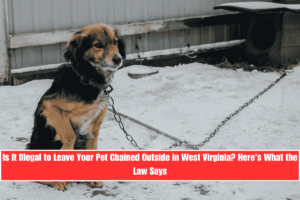In 2025, Georgia schools are taking stronger steps to educate students about the dangers of vaping and tobacco use. With the rise in e-cigarette use among schoolchildren, the Georgia Tobacco Use Prevention Program has created a detailed list of prevention programs for elementary, middle, and high school students.
These programs are carefully reviewed using the Georgia Standards of Excellence (K–12) for Health Education and focus on teaching students the health risks of vaping, how to avoid peer pressure, and how to say no to nicotine.
What is the Vaping Prevention Program Rubric?
The rubric developed by Georgia’s Department of Education helps schools select from various approved prevention programs. It includes information like:
- Number of sessions
- Duration of each lesson
- Extra resources available for teachers, parents, and students
Note: This rubric is not a complete list, and schools may use other approved programs as well.
Approved Vaping Prevention Programs in Georgia (2025)
1. Catch My Breath – by CATCH (Coordinated Approach to Child Health)
Grades: K–12
A popular evidence-based program, Catch My Breath is designed to help students from grades 5–12 understand the dangers of nicotine and vaping. It also teaches refusal skills and critical thinking. For grades K–4, expansion lessons are included to start prevention early, as studies show early education is key.
Website: CATCH My Breath
2. Vaping: Know the Truth – by Truth Initiative & Partners
Grades: Middle & High School
This interactive digital course helps students understand the risks of e-cigarettes. It also connects students who want to quit vaping with support through the “This is Quitting” text program, which has helped over 400,000 youth.
Website: Vaping: Know the Truth
3. ASPIRE – A Smoking Prevention Interactive Experience
Grades: Middle & High School
ASPIRE is a free, bilingual, online program that teaches about the dangers of smoking and vaping. Students engage with videos, stories, quizzes, and real testimonials from smokers, survivors, and healthcare workers.
Website: ASPIRE
4. FDA Vaping Prevention & Education Resource Center
Grades: All
This free resource offers teachers, parents, and students access to:
- Lesson plans and videos
- Interactive tools
- Infographics and real stories
It provides age-appropriate content and promotes open conversations about tobacco use and vaping.
Website: FDA Vaping Prevention
5. Know the Risks: A Youth Guide to E-cigarettes – by CDC
Grades: 6–12
This educational presentation helps adults (teachers, youth leaders, etc.) educate students about the risks of vaping. It includes talking points and visuals and is ready for presentation without needing extra permissions.
Website: CDC Know the Risks
6. Stanford Tobacco Prevention Toolkit – You and Me, Together Vape-Free
Grades: Elementary, Middle, and High School
This 6-lesson program includes:
- Lesson slides, quizzes, and worksheets
- A 2-lesson version for younger children
It focuses on attitudes, coping with stress, and handling peer pressure. It is especially supportive for high-risk groups, including racial minorities and LGBTQ+ students.
Website: Stanford Toolkit
Tips for Parents to Prevent Vaping in Kids
- Set a good example by not using tobacco or vaping products
- Talk to your child about why vaping is harmful
- Make regular appointments with healthcare providers to discuss health risks
- Stay involved in your child’s school and encourage tobacco-free policies
- Visit LIVEVAPEFREE.com for quitting resources
Signs Your Child May Be Vaping:
- Sweet or minty smell
- Frequent coughing or dry mouth
- Excuses to go outside or to the bathroom often
- Mood changes or anxiety
- Nosebleeds or change in eating habits
Georgia’s 2025 approach to vaping prevention in schools is focused, science-based, and age-appropriate. With support from educational tools and resources, schools and parents can work together to protect students from the harmful effects of vaping and nicotine.
By starting early, staying informed, and using these programs, we can help children make healthy, smoke-free choices that last a lifetime.
FAQ: Georgia School Vaping Prevention Programs 2025
Are Georgia schools required to use these programs?
While not mandatory statewide, schools are encouraged to use programs approved by the Georgia Board of Education and listed in the vaping prevention rubric.
Which age groups do these programs target?
Programs are available for all age levels: elementary (K–4), middle (5–8), and high school (9–12).
Are the programs free for schools?
Yes. Most of these programs like ASPIRE, CATCH My Breath, and Vaping: Know the Truth are completely free.
Do these programs also help students quit vaping?
Yes. Programs like Truth Initiative’s “This is Quitting” provide support for students who are already using e-cigarettes.
Where can parents find more information or help?
Parents can visit LIVEVAPEFREE.com, talk to their child’s teacher, or contact the Georgia Tobacco Quit Line at 1-877-270-7867.
How early should vaping education begin?
Experts recommend starting early in elementary school, as early prevention reduces the chance of tobacco or vape use in high school.


















Leave a Reply